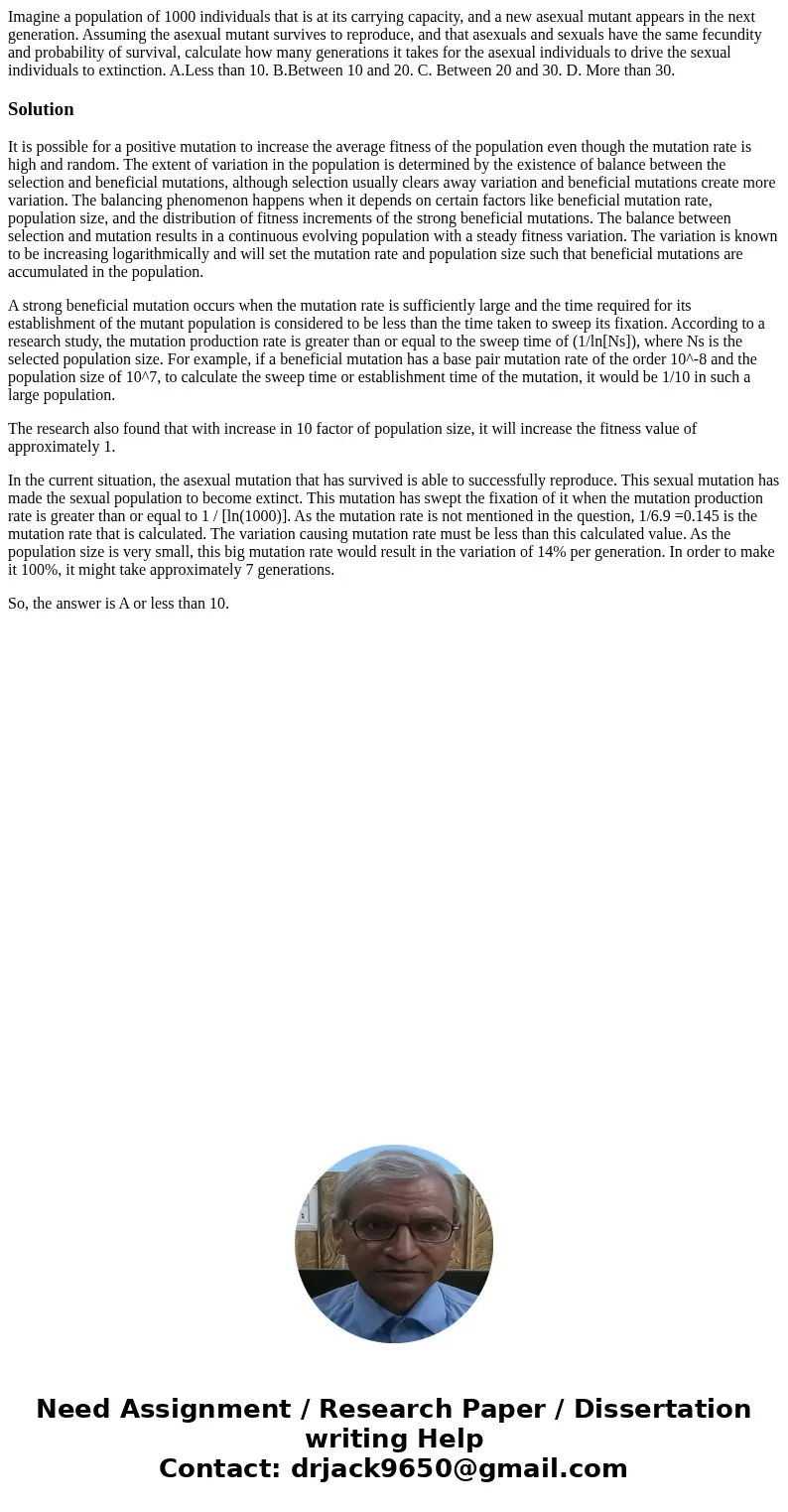Imagine a population of 1000 individuals that is at its carr
Imagine a population of 1000 individuals that is at its carrying capacity, and a new asexual mutant appears in the next generation. Assuming the asexual mutant survives to reproduce, and that asexuals and sexuals have the same fecundity and probability of survival, calculate how many generations it takes for the asexual individuals to drive the sexual individuals to extinction. A.Less than 10. B.Between 10 and 20. C. Between 20 and 30. D. More than 30.
Solution
It is possible for a positive mutation to increase the average fitness of the population even though the mutation rate is high and random. The extent of variation in the population is determined by the existence of balance between the selection and beneficial mutations, although selection usually clears away variation and beneficial mutations create more variation. The balancing phenomenon happens when it depends on certain factors like beneficial mutation rate, population size, and the distribution of fitness increments of the strong beneficial mutations. The balance between selection and mutation results in a continuous evolving population with a steady fitness variation. The variation is known to be increasing logarithmically and will set the mutation rate and population size such that beneficial mutations are accumulated in the population.
A strong beneficial mutation occurs when the mutation rate is sufficiently large and the time required for its establishment of the mutant population is considered to be less than the time taken to sweep its fixation. According to a research study, the mutation production rate is greater than or equal to the sweep time of (1/ln[Ns]), where Ns is the selected population size. For example, if a beneficial mutation has a base pair mutation rate of the order 10^-8 and the population size of 10^7, to calculate the sweep time or establishment time of the mutation, it would be 1/10 in such a large population.
The research also found that with increase in 10 factor of population size, it will increase the fitness value of approximately 1.
In the current situation, the asexual mutation that has survived is able to successfully reproduce. This sexual mutation has made the sexual population to become extinct. This mutation has swept the fixation of it when the mutation production rate is greater than or equal to 1 / [ln(1000)]. As the mutation rate is not mentioned in the question, 1/6.9 =0.145 is the mutation rate that is calculated. The variation causing mutation rate must be less than this calculated value. As the population size is very small, this big mutation rate would result in the variation of 14% per generation. In order to make it 100%, it might take approximately 7 generations.
So, the answer is A or less than 10.

 Homework Sourse
Homework Sourse